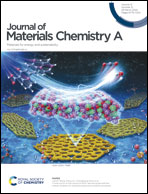Wearable flexible pressure sensors: an intriguing design towards microstructural functionalization
Abstract
Flexible electronic devices have attracted significant attention due to their wide range of applications in evaluating the state of human wellness and intelligent robotics in the long term. Microstructure flexible pressure sensors are the optimal choice for the fabrication of flexible electronic devices due to their high sensitivity, wide strain range, affordability, low power consumption, and quick response time, which can accurately convert pressure stimuli into electrical signals. In this review, we summarize the latest progress in various strategies for combining microstructures in flexible pressure sensors to achieve both flexibility and stretchability, while ensuring excellent sensing performance for medical monitoring and intelligent robots. Specifically, we focus on the selection of materials, design mechanisms, and manufacturing strategies for micro pattern-, porous-, fiber network-, and multi microstructure-based pressure sensors. Furthermore, we also examine the applications of microstructure pressure sensors in the medical field for detecting human physiological signals and the development of human–machine interaction applications to establish a communication bridge between humans and machines, which effectively conveys human intentions to machines and collects machine response signals. Finally, we discuss the challenges and prospective views in the development of this exciting field, with the aim of guiding the design and implementation of advanced flexible pressure sensors through the construction of microstructures.

- This article is part of the themed collection: Journal of Materials Chemistry A Recent Review Articles


 Please wait while we load your content...
Please wait while we load your content...